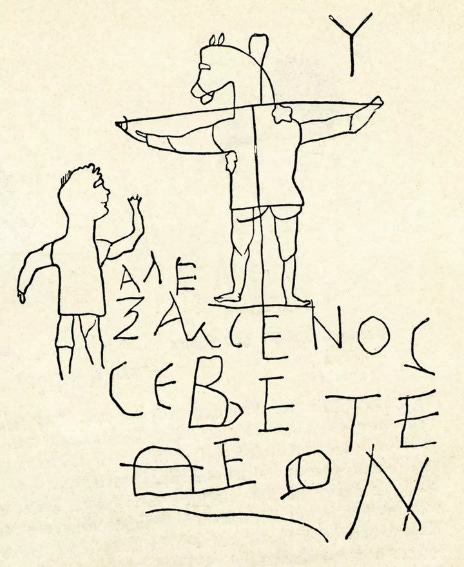Whether one approaches from faith or skepticism, the historical existence of Jesus of Nazareth remains a compelling. Although the miracles attributed to him are inherently matters of belief, archaeological and historical research have provided substantial evidence supporting the historicity of Jesus.
Key Evidence for the Historical Jesus:
1. The Shroud of Turin
The Shroud of Turin is a linen cloth bearing the faint image of a crucified man. Recent Italian scientific studies employing advanced X-ray scattering techniques suggest the shroud dates approximately 2,000 years, consistent with Jesus’ lifetime. This evidence counters earlier radiocarbon dating results from 1988, which had suggested a medieval origin (1260–1390 AD). Critics, however, propose the shroud may be an early Christian artwork rather than an authentic relic.[1][2]
2. Ancient Non-Christian Texts
Outside the Bible, several ancient historians mentioned Jesus, notably Flavius Josephus, Tacitus, and Suetonius. Historian Dr. Lawrence Mykytiuk states:
"Every single non-Christian source from ancient times recognizes, implicitly or explicitly, that he was a real person who really existed."[3]
3. Physical Evidence of Crucifixion
In 1986, the remains of a crucified man named Jehohanan were discovered near Jerusalem, with a nail through his heel bone—confirming the Gospel accounts of Roman crucifixion and proper burial even for executed prisoners.
4. Early Christian Inscription
An inscription dated to 230 CE discovered in Israel explicitly references Jesus:
"The god-loving Akeptous has offered the table to God Jesus Christ as a memorial."
This finding emphasizes early Christian devotion to Jesus as a divine figure.[4]
5. The Church of the Apostles
Excavations in 2017 near the Jordan River revealed a Byzantine basilica identified as the Church of the Apostles, associated with apostles Peter, Andrew, and Philip. Professor Steven Notley confirmed the authenticity of the site, offering archaeological confirmation of Jesus' disciples and their communities.[4]
6. Alexamenos Graffito
A Roman anti-Christian graffito discovered near Palatine Hill depicts Jesus mockingly as a donkey-headed figure crucified, accompanied by the Greek inscription, "Alexamenos worships his god." This artifact from the early centuries inadvertently confirms both Jesus’ historical existence and early Christian worship.[4]
Alexamenos graffito - Roman anti-Christian graffiti discovered on a wall in Palatine Hill, Rome. Greek inscription reads 'Alexamenos worships his God' with an image of a man worshipping a crucified, donkey headed figure.
Archaeological Confirmation
Significant archaeological findings strongly affirm the New Testament accounts, notably: [4]
Herod the Great: Extensive archaeological evidence for King Herod, a key figure in Jesus' birth narrative, notably discovered at Herodium by archaeologist Ehud Netzer.
Nazareth and Bethlehem: Archaeological findings confirm the existence of these towns in the first century, supporting Gospel accounts.
Capernaum and Tiberius: Excavations reveal significant locations of Jesus’ ministry, including Peter’s house and the synagogue at Capernaum.
Pool of Siloam and Jacob's Well: Identified archaeological sites confirming Gospel accounts of specific miracles performed by Jesus.
Pontius Pilate Inscription: Discovered in Caesarea, validating the historical existence of the Roman prefect who sentenced Jesus to death.
Caiaphas Ossuary: Confirmed ossuary of Joseph ben Caiaphas, the High Priest involved in Jesus' trial.
Evidence of Roman Crucifixion: First-century archaeological evidence affirming the practice of crucifixion in Jerusalem.
Nazareth Inscription: Marble decree by Caesar Augustus imposing capital punishment for tomb robbery, likely in reaction to resurrection claims, indirectly affirming widespread belief in Jesus’ resurrection.
Mainstream scholarship broadly recognizes the historical existence of Jesus. Dr. Gary Habermas enumerates at least ten historically corroborated facts about Jesus supported by Josephus and New Testament sources, including his crucifixion under Pontius Pilate and his disciples’ proclamations of his resurrection.[3]
10 truths about Jesus’ life:
1. Jesus was known as a wise and virtuous man
2. Jesus had many disciples both Jews and Gentiles
3. Pilate condemned Jesus to die
4. He was executed by crucifixion
5. His disciples reported that He rose from the dead
6. He appeared to them the 3rd day after His crucifixion
7. His disciples continued to proclaim His teaching
8. He was perhaps predicted by the OT prophets
9. His brother’s name was James
10. He was called “Messiah” by some
Thank you for reading Dr. Aaron Judkins Substack. Your subscription supports my work and allows me to bring you more articles like this.
As a token of our appreciation, we're offering you a limited-time offer of 20% off a paid subscription for your first year.
Thanks again for reading.
PS. If you loved this article, be sure to head over to our Ancient Pathways Patreon site and check out the “Hunt for the Red Heifers” on Coast to Coast AM.
Footnotes:
[1] Damon, P. E., et al. (1989). "Radiocarbon Dating of the Shroud of Turin." Nature, 337(6208), 611–615.
[2] De Caro, L., et al. (2022). "X-ray Dating of a Turin Shroud's Linen Sample." Heritage, 5(2), 860–870.
[3] Gary Habermas, The Historical Jesus: Ancient Evidence for the Life of Christ (College Press Publishing Company, 1996).
[4] Daniel B. Wallace Ed., Revisiting the Corruption of the New Testament: Manuscript, Patristic, and Apocryphal Evidence (Grand Rapids: Kregel Publications, 2011).









